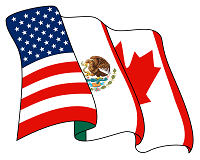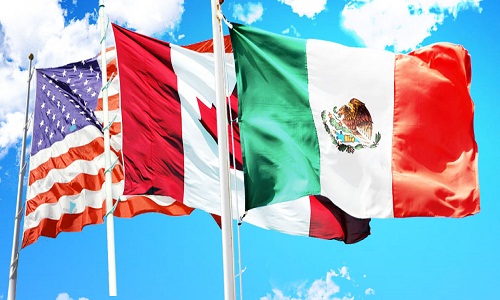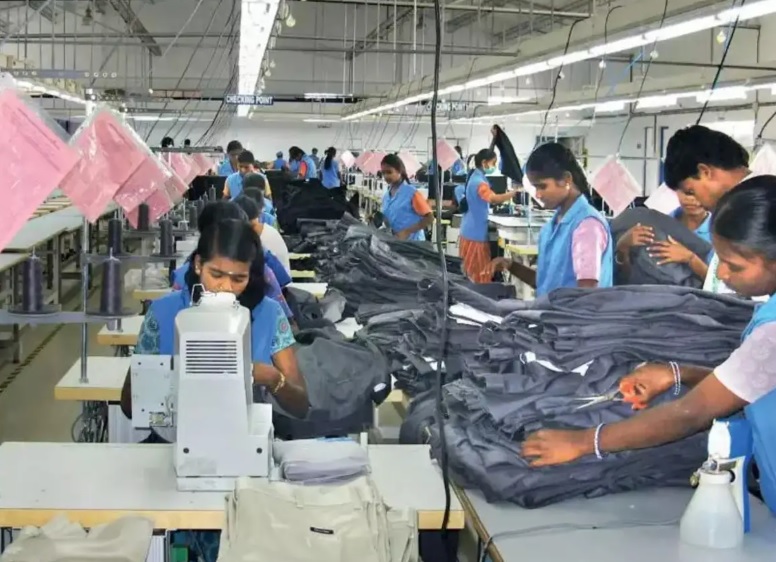FW
INDA, the Association of the Nonwoven Fabrics Industry has released a new industry outlook report, “North American Nonwovens Industry Outlook, 2016-2021.” INDA’s exclusive content provides analysis across all of the nonwoven end-use markets, including 128 disposable and 127 durable categories, to provide the most comprehensive and accurate view available of the total North American nonwovens industry. This report marks INDA’s tenth analysis of the nonwoven/engineered materials market since its first overview of the industry in 1995. Detailed supply and demand data are presented for the North American industry for 2011, 2016, and a forecast for 2021.
Brad Kalil, the report author and INDA’s Director of Market Research & Statistics, stated that this exclusive content report provides the latest market data based on an in-depth combination of primary and secondary research utilizing INDA’s proprietary demand model of 255 nonwoven categories. INDA designed this report to support strategic business planning and assist those in the industry in making better business decisions. The projections in the report were made by analyzing current the market trends and driving forces to highlight the market potential in terms of dollar value, units, and volume in both square meters and tonnage.
Dave Rousse, INDA President, also stated that the report provides the keenest insight available into the most important disposable and durable market segments. No other report has the bottom-up data that INDA gathers, making this the most reliable and definitive view of the industry. This report breaks the conventional wisdom that the nonwovens market is two-thirds disposable and one-third durable end-use products. Anyone who must understand, assess, and manage the assets of an organization would benefit from this cost effective business planning tool.
Mohammad Hatem has been elected member of the board of directors of the IAF (International Apparel Federation).
He plays a significant role in two leading trade bodies of garment manufacturers in Bangladesh, BGMEA (Bangladesh Garment Manufacturers and Exporters Association) and BKMEA (Bangladesh Knitwear Manufacturers and Exporters Association). He has been involved in the garment sector since 1984 and has visited many countries like Australia, Indonesia, Singapore, Malaysia, Thailand, and China. He is also involved in several social service organizations.
Mohammad Hatem is the managing director of MB Knit Fashion.
BKMEA is the only organization from Bangladesh that represents Bangladesh in the IAF.
IAF is an international trade association established in 1976. Its membership includes national clothing associations and companies whose core business is sourcing, designing, development, manufacturing, distribution, and retailing of apparel products.
The International Apparel Federation is based in the Netherlands. The International Apparel Federation is a politically neutral global association, open to entrepreneurs and executives from the apparel chain worldwide. In addition the IAF welcomes, as associate members, educational institutions and companies that supply textiles, accessories, equipment, technology, and services to the apparel industry.
IAF’s regional office in Pakistan is the first ever IAF office in South Asia.
Swedish fashion retailer H&M opened the first ever Arket store in Munich, Germany on October 13, 2017. The newly inaugurated store of Arket, a new lifestyle brand by H&M, is spread over 1,000 square metres of area.
H&M owns fashion retail brands such as COS, and Other Stories, Weekday, Monki, Cheap Monday other than ARKET. The store features fashion products for men, women, and children. H&M’s home products have also been given space in the store. Apparel and other items from brands such as NIKE, Veja and Adidas will also be sold here.
Ulrika Bernhardtz, Creative Director, Arket stated that this is a unique opportunity and is lucky to open the first Arket store in Germany in this interesting corner location. It is a beautiful space, it feels very modern but has a depth of character already, with natural light flooding the store from all directions.
Arket’s first store was opened on the iconic Regent Street in London on 25 August 2017. The brand had launched its stores in Copenhagen and Brussels earlier this autumn. Housed in a four-storey building, the Arket store will also have a restaurant that will offer Nordic cuisine to the shoppers who wish to take a break while shopping.
YKK zipper launches an innovative finguard structure of their zipper which extends the teeth right up to the tape of the zipper to protect it from friction and rip. Their zipper is enhanced with an improved dynamic shape and multifunctional purpose. The newly designed teeth are manufactured in size 75, besides it maintains top quality and is best suited for use for all garments, shoes, accessories and even luggage.
Part of the revered Excella range, the zipper teeth are available in 20 different platings and over 600 tape colours.
Founded in 1968, YKK Italy S.p.A. is the Italian sister Company of YKK Group, a global leader in fastening accessories. The brand is known for innovation and technology and is used by many of the world’s leading fashion and accessory products.
International cotton stocks — with the exception of China — are expected to rise by approximately 12 million bales to touch a record high of 53 million bales during the 2017-18 season, predicts the US department of agriculture (USDA). Despite a relatively strong forecast of 3.8 per cent increase in global cotton use, a 15 per cent hike in production will outpace demand and increase global stock which will result in buyers gaining an opportunity to procure cotton at competitive prices.
An October 2017 report on cotton released by the Foreign Agricultural Service of the USDA notes, “China’s cotton import policy remains a major wildcard. Despite market rumours of possible increased import access, there has been no official indication of any change in the import policy. Therefore, 2017-18 imports are forecast at a similar level to last season.”
While the additional cotton stocks will be spread across nearly all markets, major exporters will face the burden of high stock inventory with Central Asia, Africa, the Southern Hemisphere and the US forecast to see their stock levels rise way above average.
In South Asia, cotton stocks are projected to grow as production increases three times as much as the region’s growth. Here stocks are expected to be at unusually high levels, largely in India, the major exporter.
“If Bangladesh is able to repeat past peak growth rates, it could reduce some of these stocks, however, USDA’s forecast already assumes a relatively high growth rate for use and is unchanged this month,” the report notes.
Cotton stocks-to-use ratios will be above recent levels even in import-dependent regions such as Southeast Asia. As exporters work aggressively to reduce inventory levels, resulting in some of the increased global stocks being held in mills, warehouses, and other locations across the world.
The case of two fashion brands — which remain confidential — accused of breaking an agreement to improve building and fire safety in garment factories in Bangladesh will be judged in the Permanent Court of Arbitration (PCA) in The Hague in March 2018. Trade unions were happy with the landmark ruling.
Jenny Holdcroft of IndustriALL Global Union was reported to have said, "For any brand that isn't in compliance, this decision sends a message that they cannot shirk their responsibility to worker safety.”
Poor working conditions and low wages were an area of concern in Bangladesh's garment industry which suffered one of the worst industrial accidents in 2013 when more than 1,100 people were killed in the collapse of the Rana Plaza complex. The Bangladesh Accord, which was signed in 2013 post this disaster, is a legally-binding agreement between global brands and trade unions to maintain a fire and building safety programme for textile industry workers. This fiasco ensured that fashion retailers work closely to protect workers and ensure safety of buildings in the South Asian nation and one of the reasons for this accord was to ensure greater supply-chain transparency.
The complaints allege that the two brands failed to force their suppliers to improve their facilities within the stipulated deadline and further did not help them to cover the costs to do so.
Under the accord, more than 1,18,500 fire, electrical and structural hazards have been identified at 1,800 factories which supply at least 200 brands, reports two federations.
"This decision is a win for worker safety and for accountability in Bangladesh's garment industry," said Christy Hoffman, deputy secretary general of the UNI Global Union.
China is the leading supplier of clothes to Western countries followed by Bangladesh which relies on apparel for over 80 per cent of its exports and around 4 million jobs.
Complaints from garment workers say that progress by retailers in fixing problems in the supply chain has been slow along with long working hours, low pay, poor safety standards and not being permitted to form trade unions.
"Industry veterans met for the fourth round of NAFTA trade agreement in Washington from October 11–17 and the spotlight was on the US trade agreement with Central America. Central America is a big player in the apparel industry, exporting most of its production to the US. The region is a top manufacturer of basic T-shirts, underwear, sweatshirts, pants, synthetic activewear and socks. Employing thousands of workers, factories there cut & sew t-shirts for Target and Walmart as well as for several Los Angeles clothing companies such as Jerry Leigh."

Industry veterans met for the fourth round of NAFTA trade agreement in Washington from October 11–17 and the spotlight was on the US trade agreement with Central America. Central America is a big player in the apparel industry, exporting most of its production to the US. The region is a top manufacturer of basic T-shirts, underwear, sweatshirts, pants, synthetic activewear and socks. Employing thousands of workers, factories there cut & sew t-shirts for Target and Walmart as well as for several Los Angeles clothing companies such as Jerry Leigh.

The difference between Central America and NAFTA is that the US has a $5 billion trade surplus when dealing with the DR-CAFTA countries while the US has a $74 billion deficit when dealing with its NAFTA partners, Mexico and Canada. From Canada, the United States imports a lot of crude oil and natural gas. From Mexico, it brings in a large number of cars, trucks and auto parts. That means that a renegotiated DR-CAFTA may not be as drastic as it could be with NAFTA. Gail Strickler, former assistant US trade representative for textiles under the Obama administration and now president of global trade at Brookfield Associates in Washington, D.C says they export about $29 million in goods to CAFTA countries and import about $24 billion. According to him, no one can jeopardise the trade potential of $5 billion surplus. For some, CAFTA negotiations will harp on intellectual-property protection and digital commerce.
Improving trade
Trade facilitation can also be one of the areas of focus as the US administration would like to speed up customs processing in Central America, improve training of customs officials at the borders, and reduce corruption at customs-entry points and at the ports. Julie Hughes, President, US Fashion Industry Association, feels NAFTA is being renegotiated first as that will have a big impact on what may or may not be discussed relating to CAFTA. Right now, one of the sticking points in the NAFTA renegotiations is trade-preference levels, also known as TPLs. TPLs allow for a certain amount of yarn and fabric produced outside the free-trade-agreement region to be used in apparel production as long as the non-regional inputs are cut and sewn within the free-trade countries.
Agenda of discussion
Overall, Mexico and Canada combined are permitted to use nearly 236 million sq m. equivalents (SME) of apparel, made-ups and fabric and 12.8 million kg of yarn containing third-party components. US textile companies would like to see this regulation disappear but the Mexicans, who use it more than the Canadians, want it to remain. Many US clothing manufacturers that produce in Mexico and Canada would like to see TPL levels increased rather than reduced because it would lower their production costs.
Steve Lamar, Executive VP, AAFA, noted TPLs often help retain duty-free status that might be eliminated. For example, if there were no TPLs, US clothing manufacturers could not use foreign-made linings in US-made garments and get duty-free access to Canada or Mexico. Hardly any coat linings are manufactured in the US. Using Chinese or Italian lining would disqualify the entire garment from duty-free status even if it is made of US fabric and sewn in the US. If we keep the TPLs, you get that duty-free qualification, added Lamar.
Aspects industry wants to be changed
Central American clothing factories demands some duty-free transfer of certain amount of fabric made in Central America to Mexico, where it could be cut and sewn and exported to the United States and Canada. This is similar to a provision, cumulation, allowing 100 m. sq. m. equivalents of fabric to be sent from Mexico to Central America to be cut and sewn and then shipped duty-free to the United States. Most of the fabric shipped from Mexico to Central America is denim for blue jeans and also includes wool, cotton and man-made fiber bottom-weight cloth. Having said that, the US textile industry feels it would cut into the nearly $3 billion in cotton, yarn and fabric it sends every year to the DR-CAFTA countries.
The global conductive textiles market is expected to grow at a CAGR of 15.6 per cent by 2021. A conductive textile is a fabric which can conduct electricity and it can be made with metal strands woven into the construction of the textile.
Army and defense are the largest users of conductive textiles all around the world. Functional textile-based materials equipped with nanotechnology and electronics play a major role in the development of technologically advanced military uniforms and other handy products. A soldier requires protection against extreme weather conditions, like heat, cold, wind, and rain; ballistic impact and nuclear, biological or chemical threats. Additionally, these textiles also find applications in parachutes, safety harnesses, ropes and tenting.
Europe is anticipated to lead the global conductive textiles market. Growth is mainly driven by technological advancements in wearable technologies. The conductive textiles market in the Asia-Pacific region is expected to grow at the highest CAGR from 2016 to 2021. This growth is primarily attributed to the high demand for conductive textiles from the sports and fitness and healthcare sectors in the Asia-Pacific region.
Bangladesh can be a major conductive textile manufacturer. Already Bangladesh has been producing functional jackets for sports brands like Decathlon, Nike, Puma, Adidas etc.
For the first time in many years Mayer exhibited at Irantex, which ran from September 4 to 7, 2017. Irantex is a trade fair for textile machines and textile products and mainly attracts Iranian textile industry customers.
Years of trade restrictions made it almost impossible for the textile industry in Iran to import machinery or even spare parts from the EU. After the easing of economic sanctions there has been a significant surge in demand from Iran.
Mayer is a German machinery maker. Fully electronic jacquard machines for both mattress covers and other home textiles as well as finely knitted jacquard fabrics for fashion are very popular with the company’s customers. Further its technology is popular in Iran. Only recently Mayer shipped several Relanit 3.2 HS machines to customers in Iran.
The machine on show at Irantex was an OVJA 1.6 EE with a 38-inch diameter on an industrial frame. This extremely productive machine features an electronic single needle selection in the cylinder and on the rib dial and thus offers a wide range of patterns. It is suitable for use in both the mattress and the fashion sectors. The rousing response has induced Mayer to exhibit in Iran regularly.
London College of Fashion has entered a partnership with Lectra where by the latter has introduced a new program in fashion pattern cutting and expanded its use of Lectra to include Modaris 3D and Diamino, its patternmaking and marker making solutions. Using the full Lectra suite encourages students to work together collaboratively on different projects and across different disciplines.
Lectra is now an integral part of the school’s innovative curriculum, which aims to train students on the latest industry standard technology and provide them with practical skills that will give them a head start. CAD technology is being used more and more within the fashion industry and LCF students who learn Lectra graduate have an edge over those who don’t.
London College of Fashion is a recognized world leader in fashion design, media and business education. Nurturing creative talent for over a century, LCF offers over 70 undergraduate and postgraduate degrees and 165 short courses in fashion.
Lectra is the world leader in integrated technology solutions specifically designed for industries using fabrics, leather, technical textiles, and composite materials to manufacture their products. It serves major world markets: fashion and apparel, automotive, and furniture as well as a broad array of other industries.












